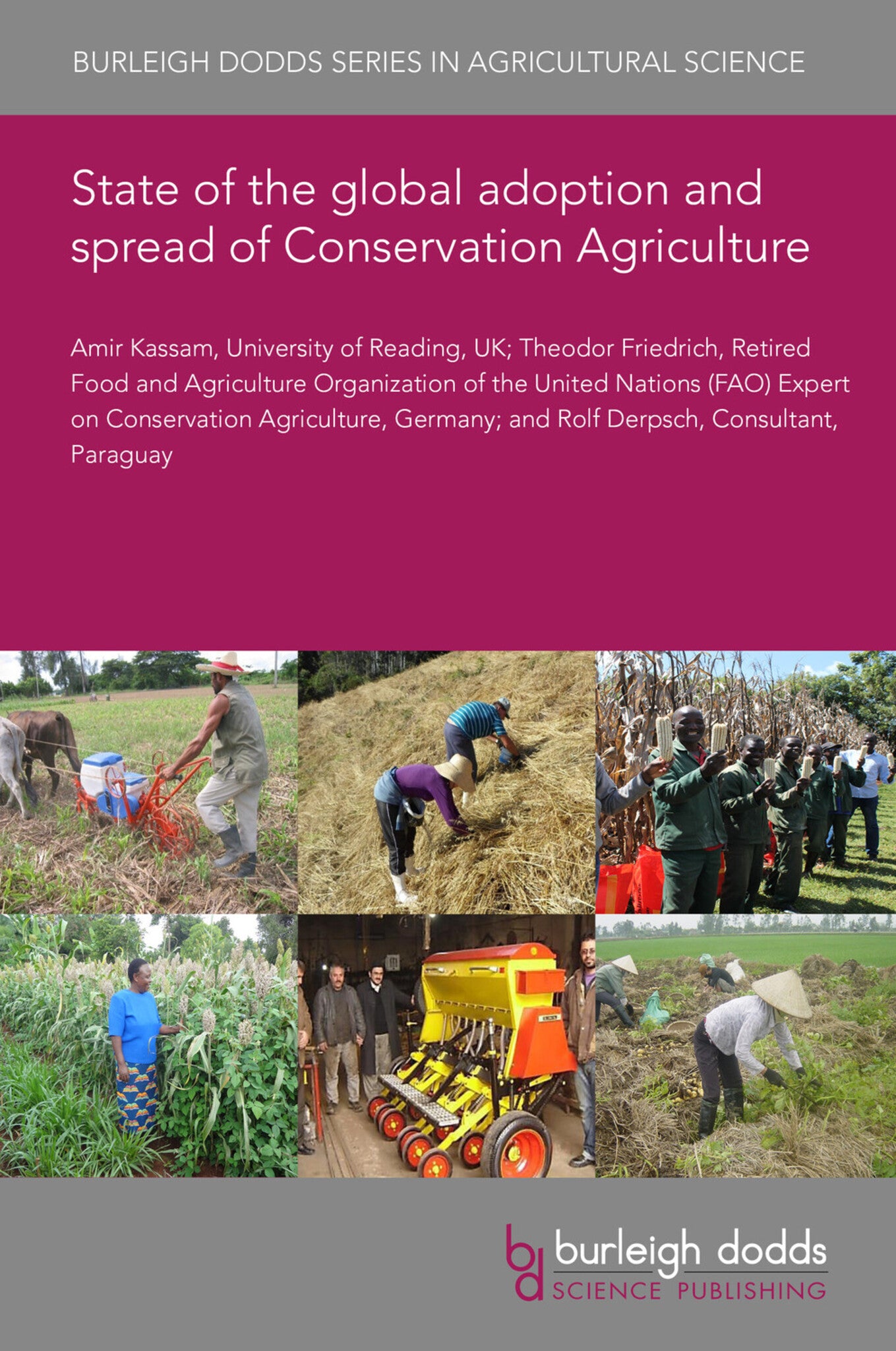We're sorry. An error has occurred
Please cancel or retry.
State of the global adoption and spread of Conservation Agriculture
Regular price
£25.00
Sale price
£25.00
Regular price
£25.00
Unit price
/
per
Sale
Sold out
Re-stocking soon
Chapter 2 in volume 1 provided a detailed account of the global adoption and spread of Conservation Agriculture (CA) up to the year 2015/16. This chapter provides an update of the global adoption a...
Read More

Some error occured while loading the Quick View. Please close the Quick View and try reloading the page.
Couldn't load pickup availability
- Format:
-
07 February 2022

Chapter 2 in volume 1 provided a detailed account of the global adoption and spread of Conservation Agriculture (CA) up to the year 2015/16. This chapter provides an update of the global adoption and spread of CA for the year up to 2018/19. In 2008/09, global CA cropland area was 106.5 M ha spread across 36 countries. In 2013/14, the global area of CA cropland was 156.7 M ha, spread across 55 countries. In 2015/16, the global area of CA cropland was 180.4 M ha, spread across 79 countries. In 2018/19, the CA area increased to 205.4 M ha (14.7% of global cropland), spread across 102 countries. Thus, CA increased by some 50 M ha of cropland for each of the two five-year periods, 2008/09 to 2013/14, and 2014/15 to 2018/19. About 50% of the global CA area is located in the Global South and 50% in the Global North. At the regional level, 4% of the CA area in 2008/09 was in Europe (including Russia and Ukraine), Asia and Africa whereas in 2018/19, it was 16%. Since 2008/09, greater percentage gains in CA area have been recorded for Europe, Asia and Africa regions. At the national level, countries that have increased their CA areas significantly are Brazil, Argentina, Paraguay and Uruguay in South America; the USA and Canada in North America; Russia and Ukraine; Spain, France, the UK, Italy and Romania in Europe; China, India, Kazakhstan, Pakistan and Iran in Asia; South Africa, Zambia and Ghana in Africa, and Australia. CA systems have an important role to play in addressing the global burden of environmental crises and in meeting the Sustainable Development Goals. The 8th World Congress on Conservation Agriculture agreed to work towards a notional goal of transforming 50% of global cropland area or 700 M ha into CA by 2050. CA global community must continue its effort to improve the quality and performance of CA systems by incorporating biological or organic CA practices. Equally important for the future is the need to support smallholder farmers transform their conventional systems to CA systems with support from sustainable mechanization.

Price: £25.00
Publisher: Burleigh Dodds Science Publishing
Imprint: Burleigh Dodds Science Publishing
Series: Burleigh Dodds Series in Agricultural Science
Publication Date:
07 February 2022
ISBN: 9781801463850
Format: eBook
BISACs:
TECHNOLOGY & ENGINEERING / Agriculture / Sustainable Agriculture, Agronomy and crop production, TECHNOLOGY & ENGINEERING / Agriculture / Agronomy / Crop Science, NATURE / Environmental Conservation & Protection, Conservation of the environment, Sustainable agriculture

1 Introduction 2 Global and regional adoption and spread 3 Conservation Agriculture adoption at national level 4 Global Conservation Agriculture cropland goal for 2050 5 Concluding remarks 6 Where to look for more information 7 References



